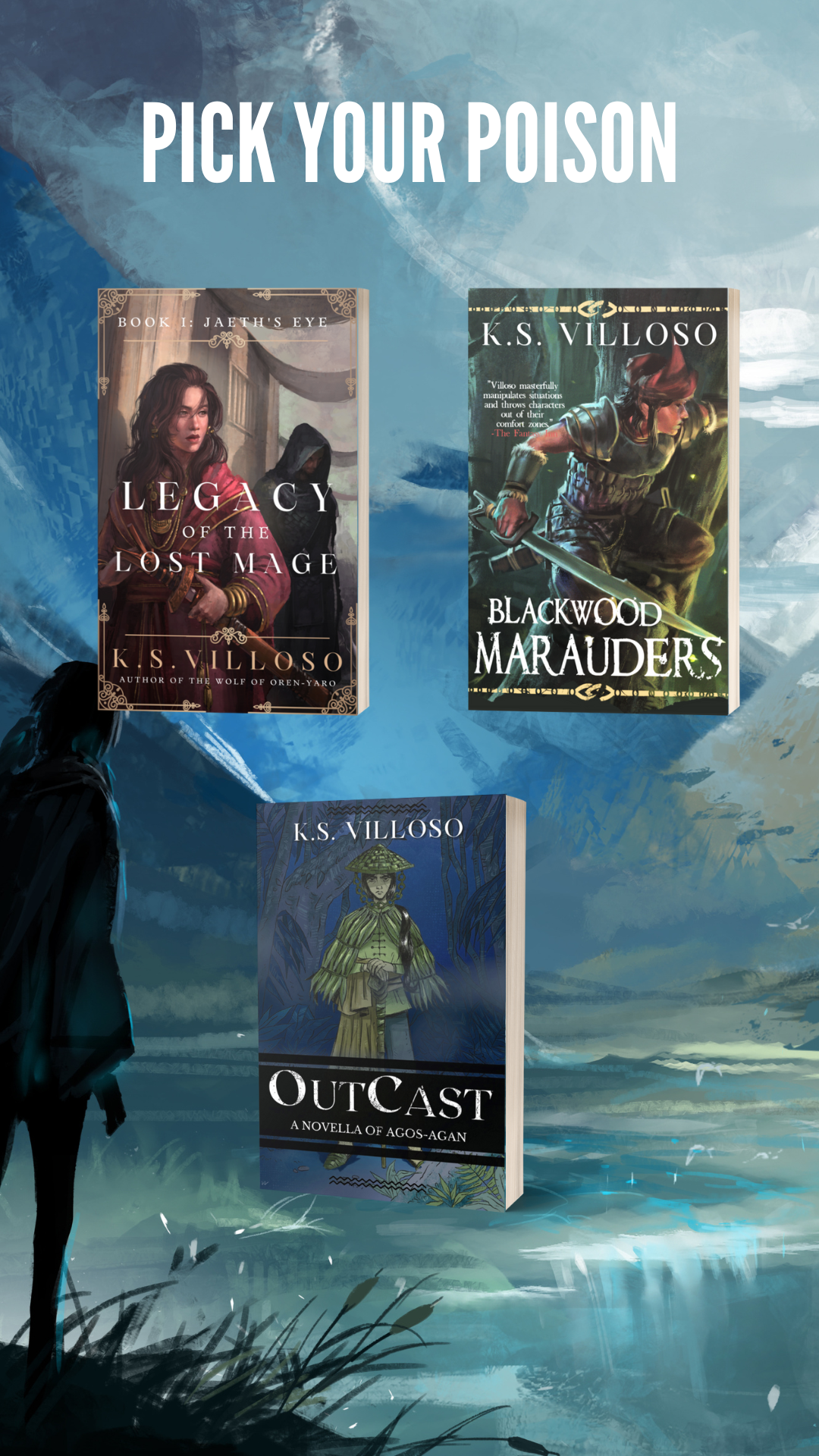Story–yes, even an epic fantasy story–is about change.
A boy becomes a king. A tyrant repents. A kingdom rises; another falls.
There are thousands of ways to tell a story, but the fundamentals remain the same.
Not every series requires chronological reading. Some stories are self-contained. I’ve written series like these–Blackwood Marauders in particular is one such. The stories in that series begin and end within the narrative, and you do not need to remember the plot from the previous books in order to enjoy the next. Chronicles of the Bitch Queen, though? This is how the story begins:
They called me the Bitch Queen, the she-wolf, because I murdered a man and exiled my king the night before they crowned me.
The Wolf of Oren-yaro, Chronicles of the Bitch Queen Book I
This line is the first domino in a multitude of events that takes you down a queen’s self-realization and discovery not just of who she is, but the part she plays in the wider scheme of things. I’ve had my plots likened to a Rube Goldberg machine: every bit falling into place at just the right time. They are complicated, but not meant to be overwhelming. This is not how all epic fantasies work. But this is how this story works. This is how this story is designed.
Why? I could argue ‘Why not?’, but I’ll answer earnestly. As a marginalized writer dealing with worldviews not usually shared by the default, people tend to be disoriented whenever they step into my worlds. I’ve had people comment that they can’t place themselves, or that they don’t know why characters function the way they do (the motivations or reactions don’t make sense, even as they are culturally relatable to me). By the time I wrote Chronicles of the Bitch Queen, I was already well aware of the perceived difficulties–whether consciously or unconsciously–in accessing my work. As unfair as it was, I wanted to try a bit harder to bridge the gap.
So I used the power of structure to create an epic fantasy story that builds on itself at just the right time, allowing your perception of the story to change as the characters themselves change. It begins innocuously: an aggrieved wife wants to reunite with her husband. Why? We don’t know; it doesn’t matter. What matters is what she’s feeling. What matters is that her entire world revolves around this desire, a singular, focused thing like the pointy end of a blade. As we watch her stumble along on this road, the stakes are fed to us, bit by bit. Her husband could have been king, but chose not to be crowned and abandoned her instead. Her supporters do not want her to meet him, but she insists she must.
And so on, and so forth, this dance I take you through as the story uncovers itself and begins to bloom underneath your feet. Outwardly, it looks a bit like the hero’s journey, doesn’t it? That’s because it is, by design: The Wolf of Oren-yaro is structured in such a way that I want an audience unfamiliar to the cultural markers to find themselves in familiar territory. A thief shows up–ah, you know how this goes. You think you do, anyway. Do you? I’ll let you have it for now. Because once we’ve gotten to know each other, once I know you’ve gotten a handle on things, I’m about to turn things upside down.
The second book, The Ikessar Falcon is a quest-style epic fantasy–a good old-fashioned journey that is all about being the first to seize a prize, picking up from the explosion that is the climax of The Wolf of Oren-yaro. After nearly five hundred pages, I assume the reader understands the rules and the stakes and have gone on an emotional learning journey with the main character already. I turn things upside-down not to disorient the reader, but to sweep them off their feet. They know and anticipate this happening already; The Wolf of Oren-yaro has played with their understanding of reality and taught them how I tell my stories.
Guess what’s next? The upcoming finale to the epic fantasy trilogy, The Dragon of Jin-Sayeng is not just an epic war story that explodes the scope of the last two, but also plays on everything the reader has learned from Book I and Book II. Not just the characters and stakes and plots, but the patterns. Patterns, you say? What patterns? Let’s go back to Book I. Remember the thief and the princess trope? Remember the con? Remember how it’s just the first of many? This is probably important. The emotional impact of the ending of this series just won’t be the same if you forget these things. The twists are progressive, building upon each other slowly, echoing one another as the song slowly builds to a symphony.
To read Chronicles of the Bitch Queen out of order is akin to opening a burger and eating the cheese first. It is entering a house through the chimney. It is discovering a majestic viewpoint by climbing the cliffside, not the gentle, meandering trail from behind. If you fall flat on your face, I’m sorry–I was waiting for you from the other side.

Every tool in a writer’s arsenal has power, and to use them wisely is to expand ways to tell a story beyond the ordinary. There is no one way to tell a story. Writers often make the choices they do for a reason. And when you respect a writer’s intent, you may be pleasantly surprised at what you discover.

